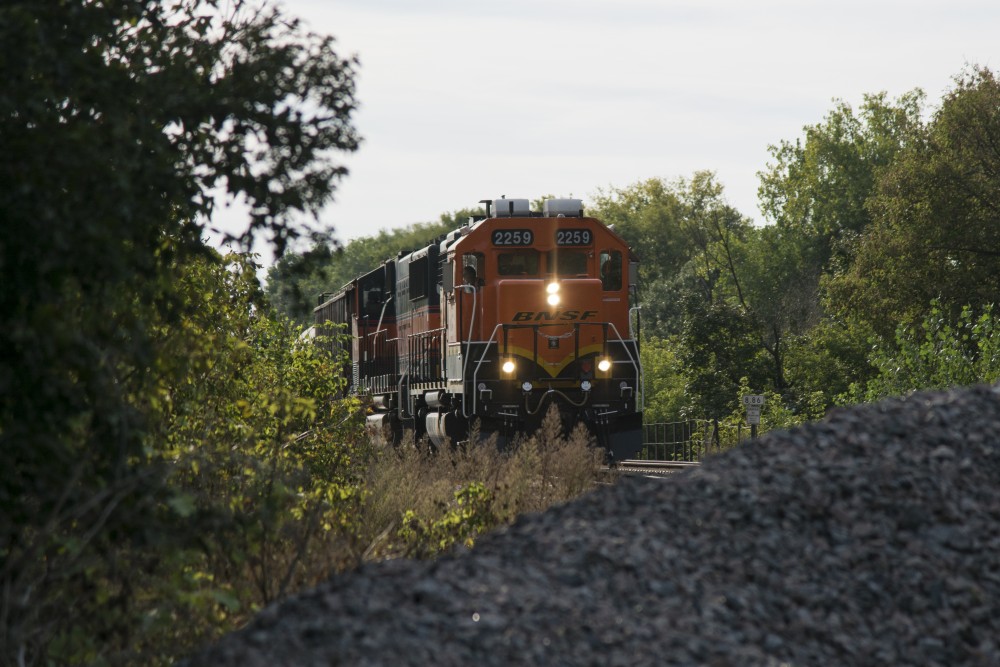Following the death of a 19-year-old University of Minnesota student last October, residents of Southeast Como are at an impasse for improving the safety of a segment of railroad tracks through the neighborhood.
Questions of property ownership, effectiveness and economics have slowed the problem-solving process at the closed-crossing of 21st Ave SE. and Talmage Ave SE. A pedestrian was most recently struck by a train in early August, prompting the neighborhood to reach out to the City again.
The east-west track portion is flanked by two dead-end roads with steel vehicle barriers. Despite nearby official crossings, some pedestrians cross through this section as a shortcut.
Reported train impacts along this shortcut date back decades, but it was the fatal incident on Oct. 8, 2017 that prompted the community’s initial call to address safety concerns in the corridor.
The pedestrian hit this August was struck by a train 20 feet away from the site of the October fatality. The victim was “laying on the tracks, and … made no apparent attempt to move away,” according to a statement from BNSF Railway Company.
Cody Hoerning, a Southeast Como Improvement Association board member, said a Minneapolis Police Department officer informed him the person was alive when transported from the scene by ambulance, although no official reports were released.
Since community members, state officials, the City and BNSF Railway Company started discussing potential safety measures last October, no major actions have been taken.
“We’ve had a couple suggestions that have been offered. There’s been a strong push from some state-level officials to actually close that [entire] intersection,” said Ward 1 Council member Kevin Reich. “That was the solution they felt [would] address the concerns of the community.”
Community members and the City have considered closing the legal crossing as far back as 2006. Much of the community opposed the proposition, as the crossing is one of three main east-west thoroughfares through the neighborhood.
Reich said these issues aren’t typically the City’s concern, so his staff is seeking creative solutions for railroad safety measures. Reich said he hopes whatever resolution the City finds is effective.
“We gotta figure out a design that has some merit to it in terms of mitigating issues and not just … a thing that we put up just to say we did something,” Reich said.
Reich and various community members said they support the idea of placing a fence near the location, but Jon Wertjes, director of traffic and parking services with City of Minneapolis Public Works, said it would not be a effective solution.
“Is there a broader conversation about … [fencing] and other solutions?” Wertjes said. “I think that’s where we want to have the conversation and try to find an action that will result in a better solution to prevent people from crossing the tracks.”
Wertjes said his department has discussed signage as a short-term solution, but Hoerning said none has been added since the October incident.
Longer-term solutions could include warning lights or gate arms, which he said are typical for ground-level crossings. Wertjes also said tracks could be separated from ground-level, but doing so comes at a major cost.
Official crossings exist one block on either side of the location, and the City needs to be realistic about that investment, Wertjes said.
After months of conversations with the City, BNSF and various rail safety advocacy groups, Hoerning said his greatest concern is the security of students now that a new school year is underway.
“[The City has] a lot of priorities, but we would like to see something done,” he said. “This one has been kind of especially long … Usually we get a resolution … at least some kind of action, in six months or so. And this one’s now approaching a year.”














